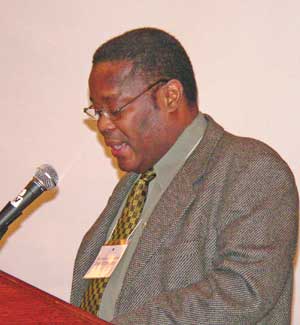Judicial education alone cannot achieve what a diverse judiciary with different life experiences can, but the speed of appointing judges from ethnically diverse backgrounds has so far been slow, according to members of the bench.

Speaking at the recent Black Law Students’ Association of Canada 16th annual national conference in Toronto, Justice Irving Andre of the Ontario Court of Justice said the numbers of minority judges do not reflect Ontario’s population, and that many would argue that such appointments are currently moving at a “glacial pace.”
“While we are encouraged by the appointment of justices within our community, we simply cannot become complacent about the few of us who have been fortunate enough to be considered favourably by the decision makers,” he said.
Andre added, however, that the justification for diversity of the bench cannot be reduced to a mathematical formula, but “It has to be premised on an acceptance of lawyers from minority communities as being equals to the challenges of presiding as justices in the judicial system.”
He emphasized the importance of equality rather than the meeting of quotas for achieving diversity on the bench.
“Quotas, in the eyes of many, carry negative and pejorative connotations. It is often a euphemism for appointing, in the minds of many, less qualified minority persons to positions of respectability and responsibility. Nothing, of course, can be further from the truth,” he said.
The reality, though, is this belief provided an impediment to the appointment of minorities to the bench, he noted. But, Andre added: “Fortunately, at no time in our history have conditions appeared more favourable for the appointment of judges within our community.”
He pointed out that there are a number of young black lawyers doing excellent work in many different areas of law, as well as more extensive support systems in place to assist lawyers.
Judge Daniel Dortelus of the Court of Québec told the conference that of Canada’s 2,000 judges, less than 20 are black, and the majority of those are in Ontario.
Within Ontario, according to Andre, the number of black judges presiding at a provincial level is less than 12 out of more than 200 judges and even less at the superior court level.
While he noted that a 1999 report by the working group on racial equality in the legal profession for the Canadian Bar Association said that in 1998 the Canadian judiciary did not reflect the society it served, Dortelus said the situation has not changed much in the last 10 years.
“Despite the fact that the federal government, the federal Department of Justice, has had a policy to encourage the appointment of women and individuals from cultural and ethnic minorities since 1988, the policy upheld to increase the number of women appointed to the judiciary, however, it hasn’t produced a significant increase for black and other visible minorities,” said Dortelus.
“Even though all Canadians enjoy constitutional guarantees of equality, careful examination of the Canadian experience has produced irrefutable proof of systemic discrimination in Canada and that there still exists an impact on equality, in particular for women, Aboriginal people, blacks, and members of other visible minorities in general,” he said.
“As a result, in 2007, our public institutions, including the judiciary, [do] not reflect a Canadian society which is pluralistic and multi-ethnic.”
He added that the public should be served by those who have different life experiences.
Judge Corrine Sparks of the Nova Scotia Family Court told the conference that in Canada the debate, discussion, and discourse has largely centred on the appointment of women to the bench, with only some discussion of minorities.
Diversity is important to the bench in a democratic society, she added, as it fosters confidence in the judiciary.
As the main players in the judicial appointment process are the judicial advisory committees and both the federal and provincial governments, in terms of solutions Dortelus said one thing that should be done is to hold the government accountable when it is appointing judges to the bench.
“I tell them every time there is more than one appointment made, they should be reflecting diversity,” he said.
Part of the solution could also be found in the committees that appoint judges, as there were no black or minority members on many of these committees for 25 years, he said.
“Given the changes of demography, the judiciary will have no choice but to open its doors to diversity,” said Dortelus.
Sparks agreed, saying, “In Canada, we must be alert to the ever changing demographics that are changing and will continue to change for decades to come.”

 Speaking at the recent Black Law Students’ Association of Canada 16th annual national conference in Toronto, Justice Irving Andre of the Ontario Court of Justice said the numbers of minority judges do not reflect Ontario’s population, and that many would argue that such appointments are currently moving at a “glacial pace.”
Speaking at the recent Black Law Students’ Association of Canada 16th annual national conference in Toronto, Justice Irving Andre of the Ontario Court of Justice said the numbers of minority judges do not reflect Ontario’s population, and that many would argue that such appointments are currently moving at a “glacial pace.”